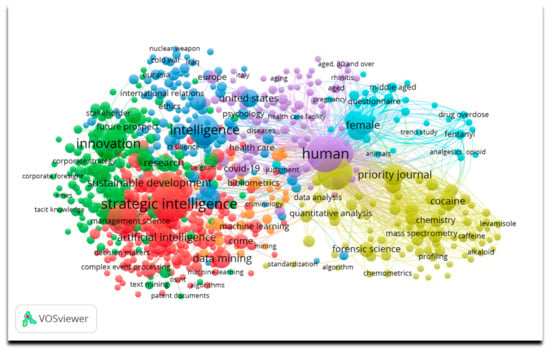-
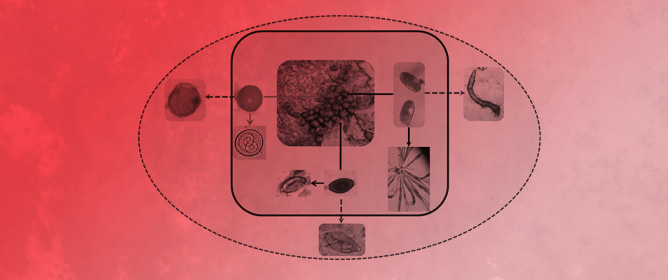 Saprophytic Filamentous Fungi against Helminths Affecting Captive Wild Animals
Saprophytic Filamentous Fungi against Helminths Affecting Captive Wild Animals -
 Unpacking Transdisciplinary Research Scenarios in Architecture and Urbanism
Unpacking Transdisciplinary Research Scenarios in Architecture and Urbanism -
 Antitumor Strategies Targeting Peptidergic Systems
Antitumor Strategies Targeting Peptidergic Systems -
 The Evolution of Human Social Behavior
The Evolution of Human Social Behavior -
 Sustainable Ground Transportation and the E-Commerce Revolution: Innovations and Challenges at the Intersection
Sustainable Ground Transportation and the E-Commerce Revolution: Innovations and Challenges at the Intersection
Journal Description
Encyclopedia
Encyclopedia
is an international, peer-reviewed, open access journal recording qualified entries of which contents should be reliable, objective and established knowledge, and reviews that offer a comprehensive analysis of the extant literature, identifying current gaps or problems. The section Encyclopedia Studies also accepts original research articles. The Encyclopedia Journal is published quarterly online by MDPI, and it is affiliated with the Encyclopedia platform.
- Open Access— free for readers, with article processing charges (APC) paid by authors or their institutions.
- Rapid Publication: manuscripts are peer-reviewed and a first decision is provided to authors approximately 24.6 days after submission; acceptance to publication is undertaken in 2.8 days (median values for papers published in this journal in the second half of 2023).
- Recognition of Reviewers: APC discount vouchers, optional signed peer review and reviewer names are published annually in the journal.
Latest Articles
Strategic Intelligence: A Semantic Leadership Perspective
Encyclopedia 2024, 4(2), 785-798; https://0-doi-org.brum.beds.ac.uk/10.3390/encyclopedia4020050 - 30 Apr 2024
Abstract
This paper explores the notion of strategic intelligence, namely with respect to leadership and business-oriented areas. Strategic intelligence is a researched concept that primarily concerns the collection and analysis of intelligence for policy and military planning, mainly at national and international levels, whereas
[...] Read more.
This paper explores the notion of strategic intelligence, namely with respect to leadership and business-oriented areas. Strategic intelligence is a researched concept that primarily concerns the collection and analysis of intelligence for policy and military planning, mainly at national and international levels, whereas this study of management and organizational decision-making application is an extension of that. This article’s subject is the necessity for strategic intelligence, a crucial competence for leaders, managers, and companies striving to remain competitive, to be utilized and best leveraged in today’s volatile and dynamic business contexts. This study follows a research design that includes a thorough literature review and bibliometric research, executed via VoSViewer, illustrating the concept of strategic intelligence from a leadership point of view as a driver of competitive advantage, enhanced by knowledge dynamics. Furthermore, this article points out that the limitations are acknowledged because the literature on the matter is limited, as strategic intelligence is relatively new to the business sector; moreover, more research is required to fully understand and use the potential of strategic intelligence in business growth. Overcoming these limitations and continuing to study the strategic intelligence concept could, on the one hand, use multiple platforms, such as scholarly articles or encyclopedias, and, on the other hand, support businesses in gaining a competitive edge and making informed decisions that can fuel their success in an ever-evolving market.
Full article
(This article belongs to the Collection Knowledge Management in Encyclopedia)
►
Show Figures
Open AccessEntry
Nature Positive in Business
by
Peter Jones and Martin Wynn
Encyclopedia 2024, 4(2), 776-784; https://0-doi-org.brum.beds.ac.uk/10.3390/encyclopedia4020049 - 30 Apr 2024
Definition
The concept of nature positive has recently emerged from the widespread recognition of the global scale at which nature is being lost and the threat this poses to the collective survival of the human race. Much of the interest in nature positive reflects
[...] Read more.
The concept of nature positive has recently emerged from the widespread recognition of the global scale at which nature is being lost and the threat this poses to the collective survival of the human race. Much of the interest in nature positive reflects the initial commitment to it by conservation organisations and by a number of international political initiatives. However, the pursuit of nature positive approaches by businesses has received little attention in the business and management literature. Building upon an analysis of secondary sources, this entry paper first examines how three international organisations suggest a nature positive strategy could be pursued. This paper then focuses on two multinational companies and how they plan to pursue a nature positive approach to their business activities. This article identifies a number of critical factors in developing a nature positive strategy: incorporating suppliers in this strategy, assessing corporate dependencies and impacts on nature, and reporting on nature positive initiatives and outcomes. At the same time, this article raises concerns that nature positive approaches could be driven more by business imperatives rather than fundamental corporate concerns about biodiversity and that many business commitments to nature positive could be seen as mainly aspirational.
Full article
(This article belongs to the Section Social Sciences)
►▼
Show Figures
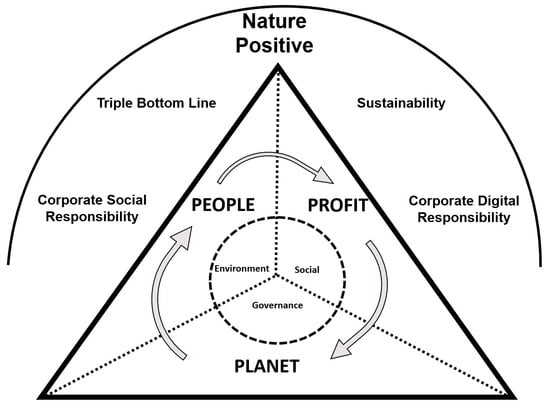
Graphical abstract
Open AccessReview
Teaching Clinical Reasoning to Veterinary Medical Learners with a Case Example
by
Amanda (Mandi) Nichole Carr, Gustavo Ferlini Agne, Roy Neville Kirkwood and Kiro Risto Petrovski
Encyclopedia 2024, 4(2), 753-775; https://0-doi-org.brum.beds.ac.uk/10.3390/encyclopedia4020048 - 29 Apr 2024
Abstract
Clinical reasoning is an essential competence of veterinary graduands. It is a complex competence with cognitive, metacognitive, social, and situational activities. The literature on clinical reasoning in veterinary medical education is relatively scarce or focused on theoretical rather than practical applications. In this
[...] Read more.
Clinical reasoning is an essential competence of veterinary graduands. It is a complex competence with cognitive, metacognitive, social, and situational activities. The literature on clinical reasoning in veterinary medical education is relatively scarce or focused on theoretical rather than practical applications. In this review, we address the practicality of teaching clinical reasoning to veterinary learners utilizing a practical example of a cow with allergic rhinitis. Learners should be guided through all the domains of clinical reasoning, including concepts, data collection and analysis, take action, and reflection on an encounter. Each of these domains needs to be clearly but concisely explained and practiced repeatedly by learners throughout the veterinary curricula. The teaching of clinical reasoning should start as early in the curriculum as possible, preferably in the pre-clinical years, with a gradual scaffolding and building of complexity before work-based learning begins, with an increase in demanding for advanced clinical reasoning competence. The teaching of clinical reasoning is best performed in specialized sessions and continued as a horizontally and vertically integrated activity.
Full article
(This article belongs to the Section Biology & Life Sciences)
Open AccessEntry
Personal Development of Doctoral Students
by
Deborah M. Riby and Simon Rees
Encyclopedia 2024, 4(2), 743-752; https://doi.org/10.3390/encyclopedia4020047 - 29 Apr 2024
Definition
Personal development refers to the process of increasing one’s self-awareness, associated increases of self-esteem, increasing skills, and fulfilling one’s aspirations. The current paper reflects on these elements within the doctoral journey, for PhD students within the UK Higher Education system. The paper makes
[...] Read more.
Personal development refers to the process of increasing one’s self-awareness, associated increases of self-esteem, increasing skills, and fulfilling one’s aspirations. The current paper reflects on these elements within the doctoral journey, for PhD students within the UK Higher Education system. The paper makes particular reference to frameworks to encourage and capture personal development needs and supervision or coaching styles that may be used to encourage a continual reflection of personal development throughout the doctorate.
Full article
(This article belongs to the Collection Doctoral Supervision)
Open AccessEntry
Work-Related Flow in Career Sustainability
by
Carol Nash
Encyclopedia 2024, 4(2), 735-742; https://0-doi-org.brum.beds.ac.uk/10.3390/encyclopedia4020046 - 29 Apr 2024
Definition
Originated during the 1970s by psychologist Mihaly Csikszentmihalyi, the theory of work-related flow has the following features: (1) the goals pursued are clear; (2) each action taken results in instantaneous feedback; (3) the skills required are equal to the challenges presented; (4) awareness
[...] Read more.
Originated during the 1970s by psychologist Mihaly Csikszentmihalyi, the theory of work-related flow has the following features: (1) the goals pursued are clear; (2) each action taken results in instantaneous feedback; (3) the skills required are equal to the challenges presented; (4) awareness and action for how to proceed are integrated; (5) consciousness is focused while distractions are ignored; (6) failure is not considered an option; (7) self-consciousness is non-existent; (8) time awareness is distorted; and (9) the engaged activity is the end in itself. According to research findings, it is the optimal work-related experience to sustain careers.
Full article
(This article belongs to the Section Social Sciences)
►▼
Show Figures

Figure 1
Open AccessReview
Pesticide: A Contemporary Cultural Object
by
Elena Fusar Poli and Michele Filippo Fontefrancesco
Encyclopedia 2024, 4(2), 720-734; https://0-doi-org.brum.beds.ac.uk/10.3390/encyclopedia4020045 - 28 Apr 2024
Abstract
The article provides a narrative review of the social and cultural interpretation of pesticides in contemporary society. In so doing, it highlights the main fields of exploration investigated by social scientists concerning the perception and role played by these products among farmers and
[...] Read more.
The article provides a narrative review of the social and cultural interpretation of pesticides in contemporary society. In so doing, it highlights the main fields of exploration investigated by social scientists concerning the perception and role played by these products among farmers and consumers. Following the WHO definition, pesticides are chemical compounds used to kill pests, including insects, rodents, fungi, and unwanted plants. They are contemporary cultural artefacts that social sciences explore in synergy with other disciplines to highlight their socio-cultural connections at both local and global levels. Specifically, the use of these products is connected with power relations, which are embedded in and reflect imbalances and inequalities in access to rights and resources, as well as specific articulation of the perception of risk arising from environmental contamination in terms of individual and collective psychophysical health. Furthermore, pesticides fit into various environmental conceptions and multiple local knowledge systems, representing the intersection of different cultural heritages, worldviews, and rationales that make the tradition–modernity dichotomy complex and dynamic. In this respect, therefore, pesticides can be understood not just as mere tools for agricultural practice but as vital windows through which to investigate multiple layers of meaning to support transitions towards sustainable pest management systems, both environmentally and socio-culturally.
Full article
(This article belongs to the Section Social Sciences)
►▼
Show Figures
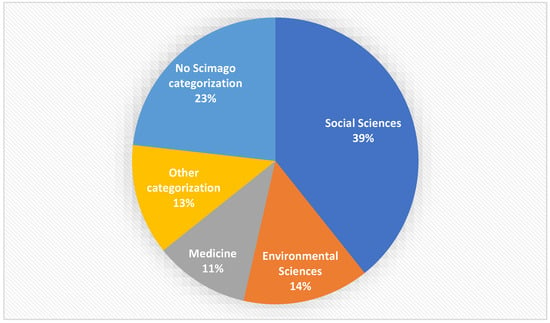
Figure 1
Open AccessEntry
COVID-19 and Participatory Music-Making
by
Esther M. Morgan-Ellis
Encyclopedia 2024, 4(2), 709-719; https://0-doi-org.brum.beds.ac.uk/10.3390/encyclopedia4020044 - 27 Apr 2024
Definition
Participatory music-making is any music-making activity in which individuals engage for the sake of the activity itself. It can be contrasted with presentational music-making, which takes the production of a performance or recording for consumption by an audience as a principal objective. During
[...] Read more.
Participatory music-making is any music-making activity in which individuals engage for the sake of the activity itself. It can be contrasted with presentational music-making, which takes the production of a performance or recording for consumption by an audience as a principal objective. During the COVID-19 pandemic, participatory musicians adopted a variety of technological means by which to make music together online. While virtual activities allowed these individuals to sustain their communities and grow as musicians, they did not satisfy all the needs met by in-person music-making. Additionally, online music-making increased access for some but posed barriers to access for others. Virtual participatory music-making remains relevant following the relaxation of pandemic restrictions, and it will likely grow in significance as communications technologies and internet access improve.
Full article
(This article belongs to the Collection Encyclopedia of COVID-19)
Open AccessEntry
The Lower Paleolithic Engravings of Bilzingsleben, Germany
by
Robert G. Bednarik
Encyclopedia 2024, 4(2), 695-708; https://0-doi-org.brum.beds.ac.uk/10.3390/encyclopedia4020043 - 23 Apr 2024
Definition
Some of the earliest known engravings are described, analyzed, and interpreted, following their microscopic examination. They are of significance in exploring the cognitive evolution of hominins several hundred thousand years ago and have not been described together before. The Steinrinne site near Bilzingsleben,
[...] Read more.
Some of the earliest known engravings are described, analyzed, and interpreted, following their microscopic examination. They are of significance in exploring the cognitive evolution of hominins several hundred thousand years ago and have not been described together before. The Steinrinne site near Bilzingsleben, north of Weimar, Germany, is one of Europe’s most important Lower Paleolithic occupation sites. Its extensive human habitation floor, excavated over 1000 square meters, comprises some of the world’s oldest evidence of dwellings, broadly matching or exceeding the age of examples proposed in Africa, India, and France. It has yielded numerous hominin remains, many wooden artefacts, other exquisitely preserved organic remains, and more portable engravings than any other Middle Pleistocene site. The latter are reviewed here, presenting the results of a detailed microscopic examination of the main finds. Bilzingsleben has so far produced the largest number of engraved Lower Paleolithic objects reported, which are particularly important to exploring the cognitive developments of hominins.
Full article
(This article belongs to the Section Arts & Humanities)
►▼
Show Figures

Graphical abstract
Open AccessEntry
Pandemic Equation and COVID-19 Evolution
by
Michael Shur
Encyclopedia 2024, 4(2), 682-694; https://0-doi-org.brum.beds.ac.uk/10.3390/encyclopedia4020042 - 15 Apr 2024
Definition
The Pandemic Equation describes multiple pandemic waves and has been applied to describe the COVID-19 pandemic. Using the generalized approaches of solid-state physics, we derive the Pandemic Equation, which accounts for the effects of pandemic mitigation measures and multiple pandemic waves. The Pandemic
[...] Read more.
The Pandemic Equation describes multiple pandemic waves and has been applied to describe the COVID-19 pandemic. Using the generalized approaches of solid-state physics, we derive the Pandemic Equation, which accounts for the effects of pandemic mitigation measures and multiple pandemic waves. The Pandemic Equation uses slow and fast time scales for “curve flattening” and describing vaccination and mitigation measures and the Scaled Fermi–Dirac distribution functions for describing transitions between pandemic waves. The Pandemic Equation parameters extracted from the pandemic curves can be used for comparing different scenarios of the pandemic evolution and for extrapolating the pandemic evolution curves for the periods of time on the order of the instantaneous Pandemic Equation characteristic time constant. The parameter extraction for multiple locations could also allow for uncertainty quantification for such pandemic evolution predictions.
Full article
(This article belongs to the Section Mathematics & Computer Science)
►▼
Show Figures
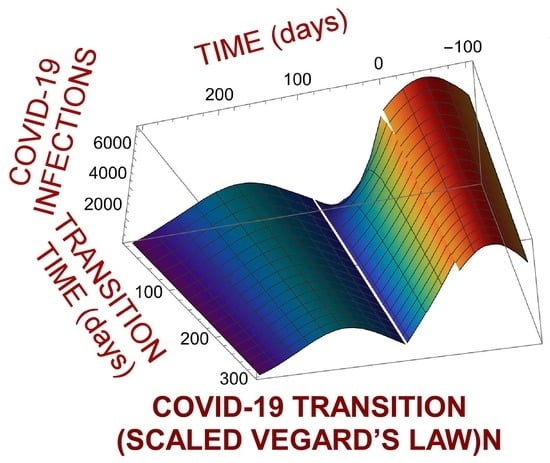
Graphical abstract
Open AccessEntry
Gaming for the Education of Biology in High Schools
by
Marina Lantzouni, Vassilis Poulopoulos and Manolis Wallace
Encyclopedia 2024, 4(2), 672-681; https://0-doi-org.brum.beds.ac.uk/10.3390/encyclopedia4020041 - 02 Apr 2024
Definition
Game-based learning refers to an educational approach where games (digital or analogue) are used in order to engage students in interactive and immersive experiences designed to teach specific concepts, skills or subjects. Gamification refers to the application of game design elements, such as
[...] Read more.
Game-based learning refers to an educational approach where games (digital or analogue) are used in order to engage students in interactive and immersive experiences designed to teach specific concepts, skills or subjects. Gamification refers to the application of game design elements, such as point systems, rewards, narratives, and competition, to non-game contexts. Game elements, mechanics and structures, when incorporated into the learning process, can enhance student understanding and increase engagement, motivation and retention of educational content. Teaching Biology can present challenges mainly due to the complexity of the subject matter, the different scales of biological organisation, and because it often includes challenging and counterintuitive concepts that may contradict students’ preconceived notions. Integrating gaming into the high school Biology curriculum not only tackles the challenges of teaching complex concepts but can also promote student engagement. Customising gaming experiences to Biology intricacies enhances critical thinking and creates a dynamic learning environment tailored to the demands of high school biological education. This entry explores the integration of gaming and gamification in high school Biology education to overcome challenges in sustaining student interest. Additionally, the article highlights the diverse applications of games in education, showcasing their versatility in enriching the educational process. Future research should evaluate specific games, explore design principles, and consider challenges associated with implementation. In conclusion, using games in Biology education promises to enhance engagement, promote active learning, and deepen understanding, contributing to narrowing the gap in biological literacy.
Full article
(This article belongs to the Section Social Sciences)
Open AccessReview
The Second Quantum Revolution: Unexplored Facts and Latest News
by
Kimberly Intonti, Loredana Viscardi, Veruska Lamberti, Amedeo Matteucci, Bruno Micciola, Michele Modestino and Canio Noce
Encyclopedia 2024, 4(2), 630-671; https://0-doi-org.brum.beds.ac.uk/10.3390/encyclopedia4020040 - 29 Mar 2024
Abstract
The Second Quantum Revolution refers to a contemporary wave of advancements and breakthroughs in the field of quantum physics that extends beyond the early developments of Quantum Mechanics that occurred in the 20th century. One crucial aspect of this revolution is the deeper
[...] Read more.
The Second Quantum Revolution refers to a contemporary wave of advancements and breakthroughs in the field of quantum physics that extends beyond the early developments of Quantum Mechanics that occurred in the 20th century. One crucial aspect of this revolution is the deeper exploration and practical application of quantum entanglement. Entanglement serves as a cornerstone in the ongoing revolution, contributing to quantum computing, communication, fundamental physics experiments, and advanced sensing technologies. Here, we present and discuss some of the recent applications of entanglement, exploring its philosophical implications and non-locality beyond Bell’s theorem, thereby critically examining the foundations of Quantum Mechanics. Additionally, we propose educational activities that introduce high school students to Quantum Mechanics by emphasizing entanglement as an essential concept to understand in order to become informed participants in the Second Quantum Revolution. Furthermore, we present the state-of-art developments of a largely unexplored and promising realization of real qubits, namely the molecular spin qubits. We review the available and suggested device architectures to host and use molecular spins. Moreover, we summarize the experimental findings on solid-state spin qubit devices based on magnetic molecules. Finally, we discuss how the Second Quantum Revolution might significantly transform law enforcement by offering specific examples and methodologies to address the evolving challenges in public safety and security.
Full article
(This article belongs to the Section Physical Sciences)
►▼
Show Figures

Graphical abstract
Open AccessEntry
Integrated Fabry–Perot Cavities: A Quantum Leap in Technology
by
Philippe Velha
Encyclopedia 2024, 4(2), 622-629; https://0-doi-org.brum.beds.ac.uk/10.3390/encyclopedia4020039 - 22 Mar 2024
Definition
Integrated Fabry–Perot cavities (IFPCs), often referred to as nanobeams due to their form factor and size, have profoundly modified the landscape of integrated photonics as a new building block for classical and quantum engineering. In this entry, the main properties of IFPCs will
[...] Read more.
Integrated Fabry–Perot cavities (IFPCs), often referred to as nanobeams due to their form factor and size, have profoundly modified the landscape of integrated photonics as a new building block for classical and quantum engineering. In this entry, the main properties of IFPCs will be summarized from the classical and quantum point of view. The classical will provide some of the main results obtained in the last decade, whereas the quantum point of view will explore cavity quantum electrodynamics (CQED), which promises to revolutionize the future “quantum internet”.
Full article
(This article belongs to the Section Physical Sciences)
►▼
Show Figures
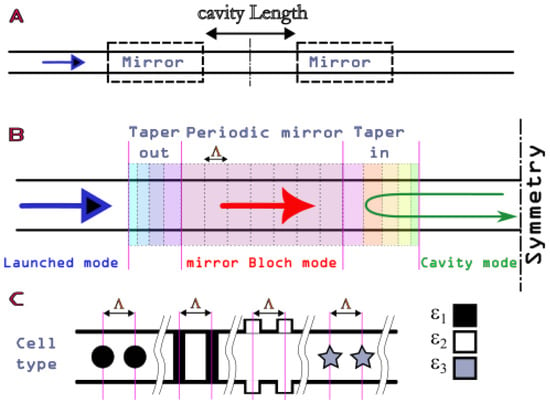
Figure 1
Open AccessEntry
Techniques for Theoretical Prediction of Immunogenic Peptides
by
Robert Friedman
Encyclopedia 2024, 4(1), 600-621; https://0-doi-org.brum.beds.ac.uk/10.3390/encyclopedia4010038 - 19 Mar 2024
Definition
Small peptides are an important component of the vertebrate immune system. They are important molecules for distinguishing proteins that originate in the host from proteins derived from a pathogenic organism, such as a virus or bacterium. Consequently, these peptides are central for the
[...] Read more.
Small peptides are an important component of the vertebrate immune system. They are important molecules for distinguishing proteins that originate in the host from proteins derived from a pathogenic organism, such as a virus or bacterium. Consequently, these peptides are central for the vertebrate host response to intracellular and extracellular pathogens. Computational models for prediction of these peptides have been based on a narrow sample of data with an emphasis on the position and chemical properties of the amino acids. In past literature, this approach has resulted in higher predictability than models that rely on the geometrical arrangement of atoms. However, protein structure data from experiment and theory are a source for building models at scale, and, therefore, knowledge on the role of small peptides and their immunogenicity in the vertebrate immune system. The following sections introduce procedures that contribute to theoretical prediction of peptides and their role in immunogenicity. Lastly, deep learning is discussed as it applies to immunogenetics and the acceleration of knowledge by a capability for modeling the complexity of natural phenomena.
Full article
(This article belongs to the Section Biology & Life Sciences)
►▼
Show Figures

Figure 1
Open AccessEntry
Developing Emotional Intelligence
by
Lucas Filice and W. James Weese
Encyclopedia 2024, 4(1), 583-599; https://0-doi-org.brum.beds.ac.uk/10.3390/encyclopedia4010037 - 19 Mar 2024
Cited by 1
Definition
Daniel Goleman perceptively and accurately noted that emotional intelligence is critical to leadership success, claiming that emotional intelligence is far more important to leadership emergence and effectiveness than intellectual capacity. Goleman’s research later confirmed an 85% relationship between emotional intelligence and leader effectiveness.
[...] Read more.
Daniel Goleman perceptively and accurately noted that emotional intelligence is critical to leadership success, claiming that emotional intelligence is far more important to leadership emergence and effectiveness than intellectual capacity. Goleman’s research later confirmed an 85% relationship between emotional intelligence and leader effectiveness. It may be the most critical area for current and aspiring leaders to develop. While leadership scholars accept the importance of emotional intelligence for leadership and the fact that emotional intelligence can be developed, there appears to be some uncertainty around how emotional intelligence can be developed. The authors shed light on that area and provide current and aspiring leaders with some proven strategies for developing the four predominant components of emotional intelligence. The importance of emotional intelligence to leadership is well documented, and leaders would be well served by working to heighten their levels of emotional intelligence and, in doing so, increase their leadership potential, efficacy, and impact.
Full article
(This article belongs to the Collection Encyclopedia of Social Sciences)
Open AccessReview
Climate Change Challenges in Temperate and Sub-Tropical Fruit Tree Cultivation
by
Petros A. Roussos
Encyclopedia 2024, 4(1), 558-582; https://0-doi-org.brum.beds.ac.uk/10.3390/encyclopedia4010036 - 15 Mar 2024
Abstract
In the last few years, the world has experienced the impacts of climate change, such as elevated mean annual temperature, extreme weather events, drought, etc. Among living organisms, perennial plant species are the ones mostly exposed to climate change impacts, as they may
[...] Read more.
In the last few years, the world has experienced the impacts of climate change, such as elevated mean annual temperature, extreme weather events, drought, etc. Among living organisms, perennial plant species are the ones mostly exposed to climate change impacts, as they may experience different extreme events within the same year, such as flooding during some periods and drought in summer months, extremely low temperatures in winter but excessively high temperatures in summer, etc. Climate change affects a range of physiological functions of temperate fruit and nut tree species, such as their phenophases, bud dormancy release and vernalization, pollination and fruit set, fruit growth and quality, as well as bud sprouting and growth initiation. Besides these, the impact of climate change on pests, diseases, and weeds may generate significant negative interactions with tree physiology, threatening food production, food safety, and human welfare. In the present manuscript, a general aspect of climate change impacts on fruits’ and nut trees’ physiological functions is described and commented on.
Full article
(This article belongs to the Section Biology & Life Sciences)
►▼
Show Figures

Figure 1
Open AccessReview
The Effects of SARS-CoV-2 on the Angiopoietin/Tie Axis and the Vascular Endothelium
by
Dolgormaa Janchivlamdan, Maitreyi Shivkumar and Harprit Singh
Encyclopedia 2024, 4(1), 544-557; https://0-doi-org.brum.beds.ac.uk/10.3390/encyclopedia4010035 - 11 Mar 2024
Abstract
Severe acute respiratory syndrome coronavirus 2 (SARS-CoV-2) infection can cause potentially life-threatening coronavirus disease (COVID-19). COVID-19 is a multisystem disease and is associated with significant respiratory distress, systemic hyperinflammation, vasculitis, and multi-organ failure. SARS-CoV-2 causes the deterioration of numerous systems, with increasing evidence
[...] Read more.
Severe acute respiratory syndrome coronavirus 2 (SARS-CoV-2) infection can cause potentially life-threatening coronavirus disease (COVID-19). COVID-19 is a multisystem disease and is associated with significant respiratory distress, systemic hyperinflammation, vasculitis, and multi-organ failure. SARS-CoV-2 causes the deterioration of numerous systems, with increasing evidence implying that COVID-19 affects the endothelium and vascular function. The endothelium is important for preserving vascular tone and homeostasis. The overactivation and dysfunction of endothelial cells are significant outcomes of severity in patients with COVID-19. The Angiopoietin 1/Tie 2 pathway plays an important role in endothelium quiescence and vessel stability. The disruption of Angiopoietin/Tie balance affects the vessel contact barrier and leads to vessel leakage, and this in turn causes endothelial dysfunction. Although vascular instability through SARS-CoV-2 is associated with endothelial dysfunction, it is still not understood if the virus affects the Angiopoietin/Tie axis directly or via other mechanisms such as cytokine storm and/or immune response associated with the infection. This review provides an overview of the impact SARS-CoV-2 has on endothelial function and more specifically on the Angiopoietin/Tie pathway.
Full article
(This article belongs to the Collection Encyclopedia of COVID-19)
►▼
Show Figures
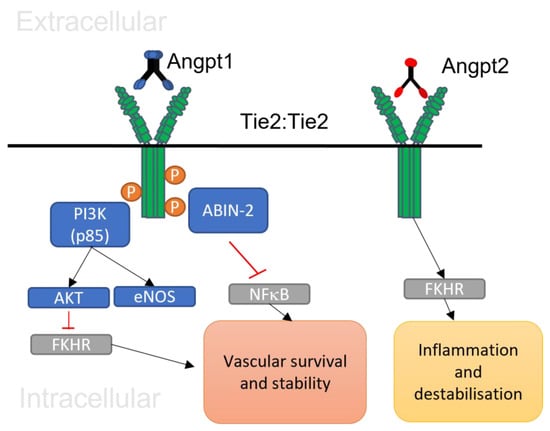
Figure 1
Open AccessReview
Proto-Neurons from Abiotic Polypeptides
by
Panagiotis Mougkogiannis and Andrew Adamatzky
Encyclopedia 2024, 4(1), 512-543; https://0-doi-org.brum.beds.ac.uk/10.3390/encyclopedia4010034 - 08 Mar 2024
Abstract
To understand the origins of life, we must first gain a grasp of the unresolved emergence of the first informational polymers and cell-like assemblies that developed into living systems. Heating amino acid mixtures to their boiling point produces thermal proteins that self-assemble into
[...] Read more.
To understand the origins of life, we must first gain a grasp of the unresolved emergence of the first informational polymers and cell-like assemblies that developed into living systems. Heating amino acid mixtures to their boiling point produces thermal proteins that self-assemble into membrane-bound protocells, offering a compelling abiogenic route for forming polypeptides. Recent research has revealed the presence of electrical excitability and signal processing capacities in proteinoids, indicating the possibility of primitive cognitive functions and problem-solving capabilities. This review examines the characteristics exhibited by proteinoids, including electrical activity and self-assembly properties, exploring the possible roles of such polypeptides under prebiotic conditions in the emergence of early biomolecular complexity. Experiments showcasing the possibility of unconventional computing with proteinoids as well as modelling proteinoid assemblies into synthetic proto-brains are given. Proteinoids’ robust abiogenic production, biomimetic features, and computational capability shed light on potential phases in the evolution of polypeptides and primitive life from the primordial environment.
Full article
(This article belongs to the Section Biology & Life Sciences)
►▼
Show Figures
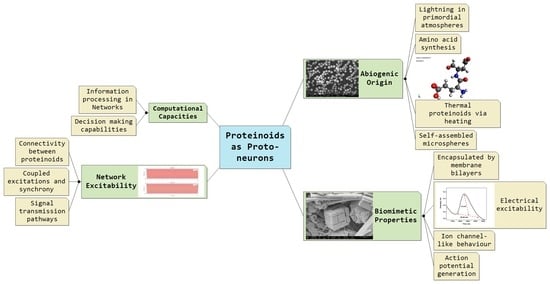
Graphical abstract
Open AccessEntry
The Balancing Act of Repurposing Feature Films and TV Series for University Teaching
by
Ngoc Nhu Nguyen
Encyclopedia 2024, 4(1), 497-511; https://0-doi-org.brum.beds.ac.uk/10.3390/encyclopedia4010033 - 08 Mar 2024
Definition
Contemporary educators have increasingly recognised the diversity of their student population and, hence, have attempted to use multimodal teaching methods for additional student learning benefits. One popular example is repurposing film and TV content for higher education pedagogies. However, integrating these materials into
[...] Read more.
Contemporary educators have increasingly recognised the diversity of their student population and, hence, have attempted to use multimodal teaching methods for additional student learning benefits. One popular example is repurposing film and TV content for higher education pedagogies. However, integrating these materials into teaching effectively often proves more complex than lecturers might anticipate. This entry investigates the merits and challenges of using FF/TV in teaching to determine the factors that impact development of an effective FF/TV pedagogy for student learning, through an interdisciplinary review of the existing literature, followed by a qualitative survey and semi-structured interviews with lecturers across disciplines at Australian universities. Using visual literacy theory, cognitive load theory, and dual coding theory, data analysis reveals that the pros and cons of integrating film and TV in teaching are in fact interconnected, and the main role of the teacher is to pedagogically balance them. Evidence-based and theory-grounded suggestions for application are detailed throughout the discussions.
Full article
(This article belongs to the Collection Encyclopedia of Social Sciences)
►▼
Show Figures

Figure 1
Open AccessEntry
Human Resources’ Burnout
by
Olga Alexandra Chinita Pirrolas and Pedro Miguel Alves Ribeiro Correia
Encyclopedia 2024, 4(1), 488-496; https://0-doi-org.brum.beds.ac.uk/10.3390/encyclopedia4010032 - 06 Mar 2024
Definition
The reality of the occurrence of burnout in human resources has been increasingly recognised as a result of today’s transforming and competitive society, which exerts a very high level of stress and anxiety on workers, generating a notorious problem in the field of
[...] Read more.
The reality of the occurrence of burnout in human resources has been increasingly recognised as a result of today’s transforming and competitive society, which exerts a very high level of stress and anxiety on workers, generating a notorious problem in the field of human resource management. Problems related to symptoms of exhaustion, mental weakness, personal devaluation, inability to solve professional problems, restlessness, and eating disorders. These problems manifest themselves in terms of personality, triggering feelings of threat, panic, nervousness, or suicide. Such disorders pose a threat not only to the person but also to the quality of their professional activities. In this way, burnout syndrome can cause a mental and physical breakdown requiring complex medical assistance. In view of the above, it is imperative that organisations take preventative and corrective measures to tackle this phenomenon. This entry covers topics such as the history of the concept of burnout, the concept, its causes and consequences, and predictive methods. By approaching the aforementioned topics using the existing literature on burnout syndrome, this entry aims to demystify the subject of burnout in human resources.
Full article
(This article belongs to the Section Social Sciences)
Open AccessEntry
Antitumor Strategies Targeting Peptidergic Systems
by
Francisco D. Rodríguez and Rafael Coveñas
Encyclopedia 2024, 4(1), 478-487; https://0-doi-org.brum.beds.ac.uk/10.3390/encyclopedia4010031 - 06 Mar 2024
Definition
Peptidergic systems show promise as targets for fighting tumors. While some peptides encourage the growth and spread of tumor cells and angiogenic mechanisms, others display antitumor properties. As such, peptide ligands and receptor antagonists could be used as antitumor agents alone or in
[...] Read more.
Peptidergic systems show promise as targets for fighting tumors. While some peptides encourage the growth and spread of tumor cells and angiogenic mechanisms, others display antitumor properties. As such, peptide ligands and receptor antagonists could be used as antitumor agents alone or in conjunction with chemotherapy or radiotherapy. Peptide receptor antagonists can counteract the oncogenic effects of specific peptides by inducing apoptosis in various types of tumor cells, hindering cancer cell migration and inhibiting angiogenesis. Peptides and peptide receptor antagonists are not currently used in clinical practice as antitumor agents. Still, aprepitant, a neurokinin 1 receptor antagonist, is a promising candidate due to its ability to promote apoptosis in many cancer cells. However, to utilize aprepitant as an anticancer agent, the dosage must be increased and administered for a more extended period. Moving beyond current protocols for aprepitant’s use as an antiemetic is essential. Additionally, a common anticancer strategy with aprepitant is possible regardless of cancer cell type. Finally, combining aprepitant with chemotherapy or radiotherapy is encouraged.
Full article
(This article belongs to the Section Medicine & Pharmacology)
►▼
Show Figures
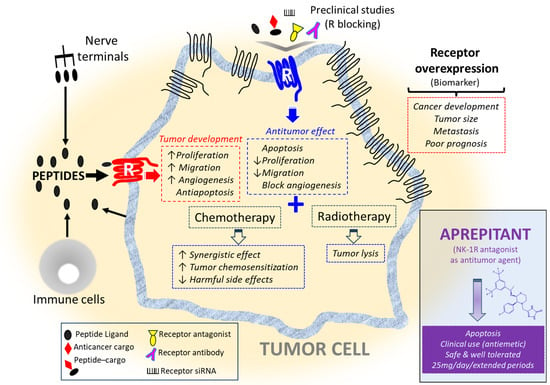
Figure 1
Highly Accessed Articles
Latest Books
E-Mail Alert
News
Topics

Conferences
Special Issues
Topical Collections
Topical Collection in
Encyclopedia
Encyclopedia of Social Sciences
Collection Editors: Michael McAleer, Chia-Lin Chang
Topical Collection in
Encyclopedia
Encyclopedia of ZEMCH Research and Development
Collection Editors: Masa Noguchi, Antonio Frattari, Carlos Torres Formoso, Haşim Altan, John Odhiambo Onyango, Jun-Tae Kim, Kheira Anissa Tabet Aoul, Mehdi Amirkhani, Sara Jane Wilkinson, Shaila Bantanur
Topical Collection in
Encyclopedia
Encyclopedia of Engineering
Collection Editors: Giuseppe Ruta, Krzysztof Żur, Ramesh Agarwal, Raffaele Barretta
